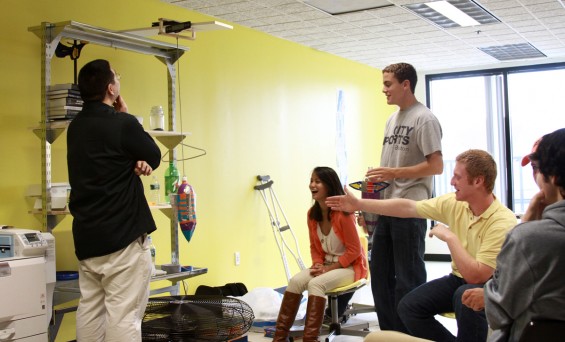
The first step in engineering isto understand the problem. For that, we need a model,a[usually] simplifiedunderstanding of how our problembehaves.Today, we accept the equation that tells us how gravity behaves: Forcegravity= G*mass1*mass2/distance2. We are so confident in it, that wechart the courses of satellites, and observe the motions of the Universe with it.But, in his day, Sir Issac Newton recorded the motion of the planets for years in order to derive this now-accepted model. The model the students studied today was the Drag equation, Forcedrag=0.5*rho*A*v2*Cd. This equation, in a slightly different form, was originally discovered by the Wright Brothers, who performed many wind-tunnel tests to figure it out. It's interesting to note that Until the late 1800's, one accepted model of flight was to twist through the air like a screw drives through wood.Even Leonardo DaVinci designed his own screw-flying machine. It wasn't until the Wright Brothers modeled the behavior of air in a wind-tunnel that we stopped screwing around. One of the models the Wright Brothers discovered is the equation for aerodynamic-drag, a.k.a. wind-resistance. This equation limits the speed at which sky-divers fall, sports-cars can drive, and even the height of a launched water-rocket. Here is David and Sam building the system that will test the water rockets.
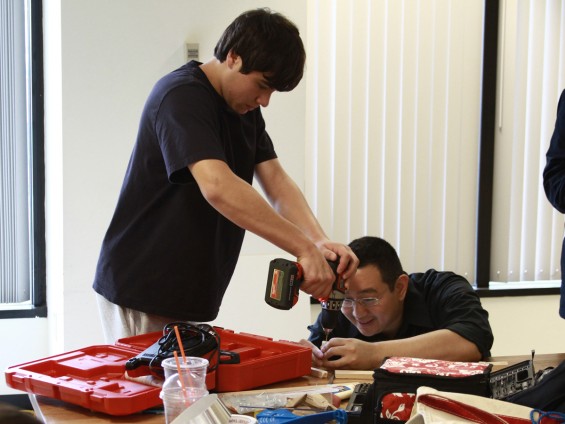
After a few attempts, we found out that the fan we got was too weak.
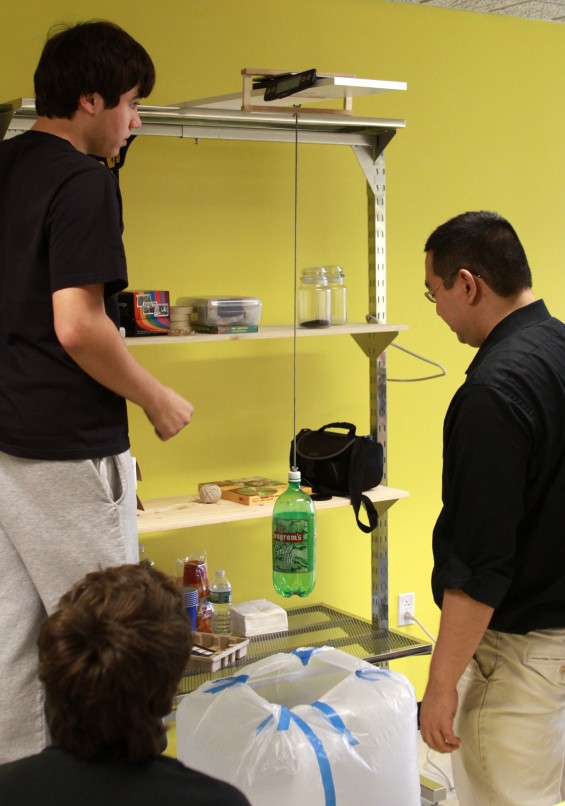
David was resourceful enough to head to MIT and bring this giant (relatively speaking) fan.
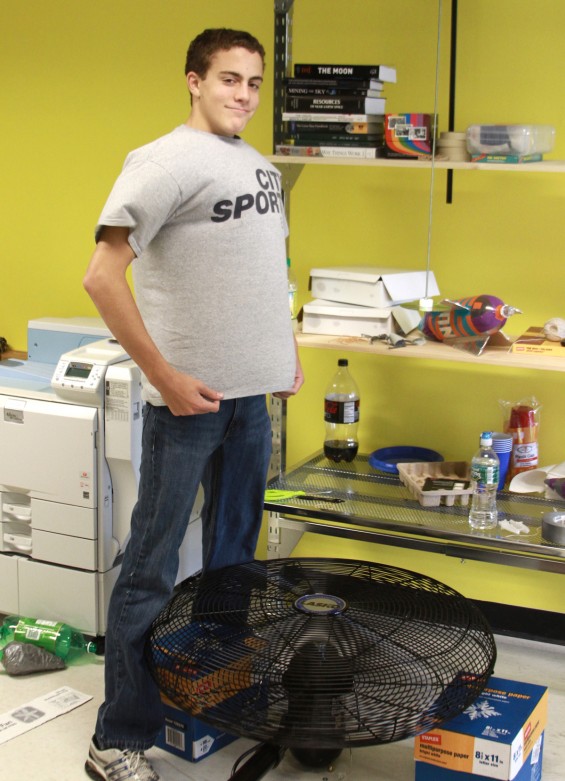
And here is the winning water rocket designed by Kris.
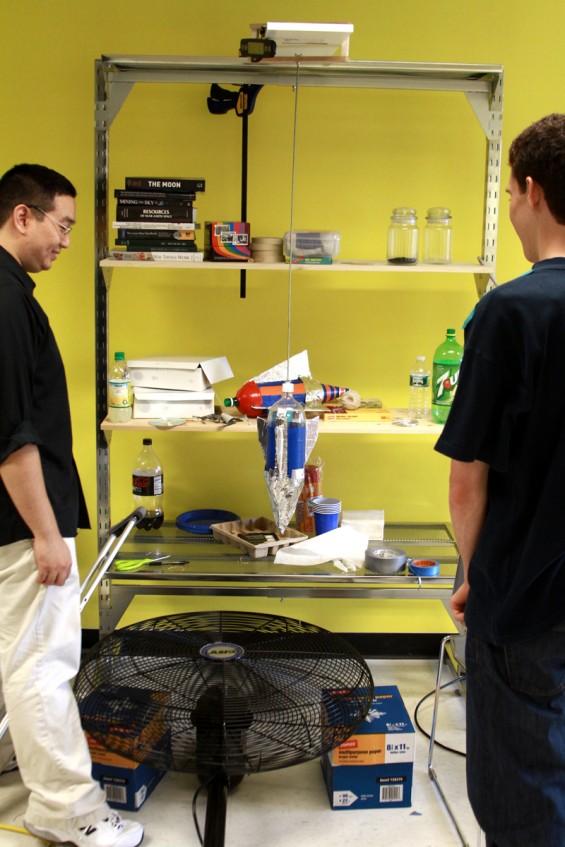
:rotate(0)/p39f1jed4mgd288myquiu5yecweg)